
On June 24, local time, the U.S. Supreme Court overturned the 1973 "Roe v. Wade" ruling, denying that the right to abortion is a constitutional right, and leaving the legality of abortion to the states. The ruling upended a landmark precedent of nearly 50 years ago, a rare reversal that challenges reproductive autonomy in modern America. Why did the U.S. Supreme Court make this decision? How does the crisis of abortion rights in the United States threaten women's lives and health? What is the situation for women on a global scale? To answer these questions, read the following books.
1. The Nine: The U.S. Supreme Court
(US) Jeffrey Toobin, Shanghai Sanlian Bookstore, published in April 2010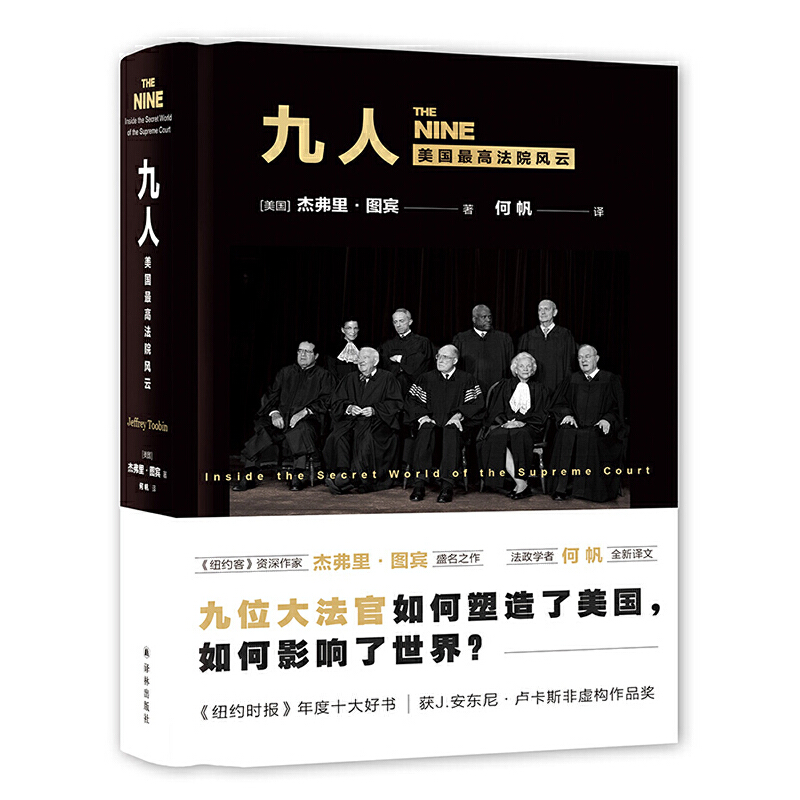 This book focuses on the Rehnquist Court and the Roberts Court, objectively narrating the history of the internal conflict of views and changes in the Supreme Court on the agenda of abortion, civil rights, and church-state relations between 1980 and 2007. Columnist Jeffrey Toobin described the personalities and ideas of Justices Rehnquist, O'Connor, Roberts, Kennedy and Scalia in the form of biographies through interviews with the current justices and more than 70 clerks. and upbringing, vividly illustrate the relationship between the justices' personal preferences, political affiliations and judgment opinions. The book covers almost all the important decisions of the Supreme Court in the past 17 years, and interspersed with the development of conservative organizations such as the Federalist Association and the American Center for Law and Justice.
This book focuses on the Rehnquist Court and the Roberts Court, objectively narrating the history of the internal conflict of views and changes in the Supreme Court on the agenda of abortion, civil rights, and church-state relations between 1980 and 2007. Columnist Jeffrey Toobin described the personalities and ideas of Justices Rehnquist, O'Connor, Roberts, Kennedy and Scalia in the form of biographies through interviews with the current justices and more than 70 clerks. and upbringing, vividly illustrate the relationship between the justices' personal preferences, political affiliations and judgment opinions. The book covers almost all the important decisions of the Supreme Court in the past 17 years, and interspersed with the development of conservative organizations such as the Federalist Association and the American Center for Law and Justice.
As a best-selling author, Toobin is good at grasping materials, telling stories, and telling many anecdotes through his vivid brushstrokes. People will read in this book: Why did O'Connor, who personally sent Bush Jr. into the White House, finally turned against the president? How did gay clerks change the legal culture of the Supreme Court? Why does Chief Justice Rehnquist hate Miranda v. Arizona so much but refuse to overturn it? Why did President Clinton finally abandon the idea of nominating a politician for justice? Why should right-wing conservatives resolutely boycott Albert Gonzalez and Harriet Miles, two die-hard conservatives, as justices? Why did Justice Thomas say nothing during the trial?
Tobin's detailed depiction perfectly presents the other side of the justices under the black robes: Kennedy's sullenness, Rehnquist's "fashionable", Scalia's childishness, O'Connor's whims, Thomas's Maverick, Breyer's long-sleeved dance, Sutter's hermit temperament. It is for this reason that The New York Times recommended this book as one of the ten best books of 2007.
2. "Who Will Guard Justice: An Interview with a Supreme Court Justice"
(United States) Brian Ram, Susan Swain, Mark Farkas, Peking University Press, December 2012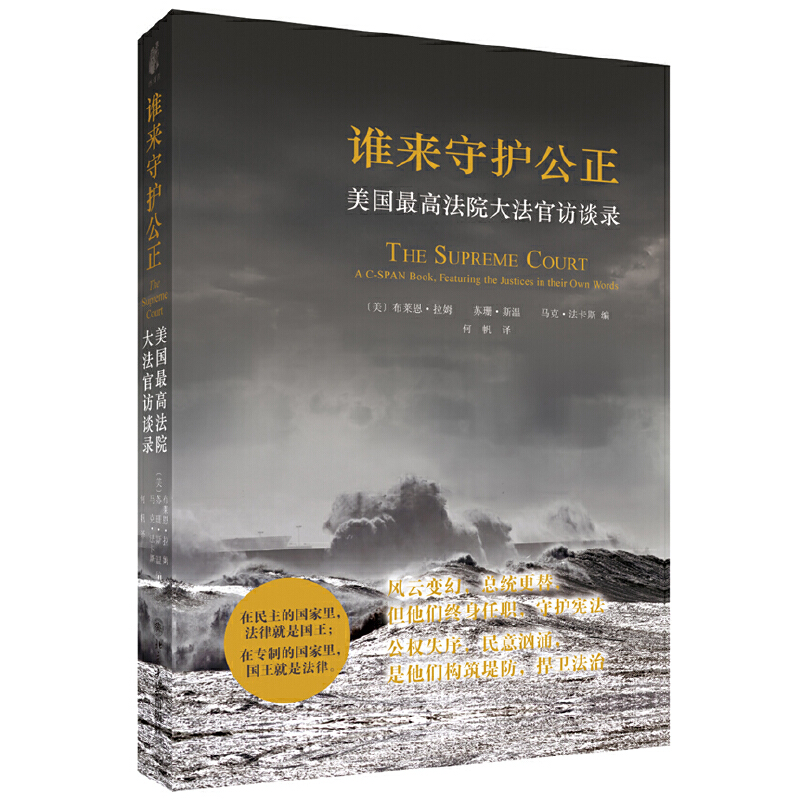 The President of the United States has a high position and still needs to be replaced regularly. However, the nine justices of the Supreme Court serve for life.
The President of the United States has a high position and still needs to be replaced regularly. However, the nine justices of the Supreme Court serve for life.
In a superpower with more than 300 million citizens and thousands of nuclear bombs, why is judicial justice entrusted to these nine people? In this judicial "assembly line", how is the "fair judgment" as the final product produced? How can the American people trust their judicial competence and professional ethics? With these questions in mind, C-SPAN interviewed nine current justices and three outgoing justices.
For the first time in U.S. history, all justices appeared on the scene for an interview with a TV station. These precious interview records are included in this book. In the book, the justices use vivid and popular language to explain in detail the inner workings of the most powerful and mysterious government agency in the United States. They talked freely about their judicial ideas and struggles, and they did not shy away from the inside story of the Supreme Court's decision-making, and a lot of content was made public for the first time.
Through this book, Chinese readers can learn: How does the U.S. Supreme Court view public opinion? Will the "one-sided" case of public opinion affect the judgment of the justices? How do they deal with Congress, the White House? What kind of court defense style do you like and what advice do you have for lawyers? Who has the final say in internal meetings? Who drafted the judgment? In order to enrich readers' understanding, interviews with the current Supreme Court clerk, former judge's assistant, former chief government attorney, trial lawyer, senior journalist and historian are attached at the end of the book, which comprehensively shows readers the highest level of the United States from different perspectives. The historical origin, functional orientation and traditional culture of the courts are convenient for readers to further understand these "patron saints of the rule of law and justice".
3. A Moment of Dissent: The 'Notorious' Justice Ginsburg
(United States) Irene Kamon, Shanna Kaniznick, Hunan Literature and Art Publishing House, published in September 2018 Ruth Bader Ginsburg was nominated to justice by Democratic President Bill Clinton in 1993. She is the second female justice of the U.S. Supreme Court after Sandra Day O'Connor, and the first female Jewish justice. She devoted her life to the struggle, maintenance and protection of women's rights, and firmly advocated that women have the right to abortion.
Ruth Bader Ginsburg was nominated to justice by Democratic President Bill Clinton in 1993. She is the second female justice of the U.S. Supreme Court after Sandra Day O'Connor, and the first female Jewish justice. She devoted her life to the struggle, maintenance and protection of women's rights, and firmly advocated that women have the right to abortion.
A widely adored American civil rights icon, Ginsburg is affectionately dubbed "Notorious RBG" by fans, a parody of famous American rapper Christopher Wallace.
Ginsburg passed away on September 18, 2020. Trump has since nominated Amy Coney Barrett to the Supreme Court, and she passed a vote by the U.S. Senate Judiciary Committee to be sworn in on October 26. This means that the Republican-nominated justices occupy 6 of the 9 seats, further consolidating the dominant majority and lighting the "right turn signal" for American society for decades to come. The U.S. Supreme Court recently denied that the right to abortion is a constitutional right and one of the chain reactions after Ginsburg's death.
"Hour of Dissent" is Ginsburg's graphic biography. Part of the book is a biography, part a collection of paintings, and part a record of Ginsburg's case. Through interspersed interviews, illustrations, hot words on the Internet and other materials, a wonderful retrospective of Ginsburg's life was carried out. The book was also recommended by Jeffrey Toobin, author of The Nine: The U.S. Supreme Court, and Fan He, a well-known legal and political translator. Alliance (ACLU) and other book reviews recommended.
4. The Handmaid's Tale
(Canada) by Margaret Atwood, Shanghai Translation Publishing House, December 2017 Margaret Atwood is one of Canada's most prominent contemporary writers, her masterpiece "The Handmaid's Tale" was published in 1985. This is a dystopian future novel, which tells the story of the future in the fictional Republic of Gilead. Due to environmental pollution and ecological damage, the survival rate and fertility rate of human beings are reduced. Above all, men occupy an absolute dominant position, while women are completely reduced to men's appendages and are divided into different classes. The Handmaid is one of those ranks, and is at the heart of the discussion throughout the story.
Margaret Atwood is one of Canada's most prominent contemporary writers, her masterpiece "The Handmaid's Tale" was published in 1985. This is a dystopian future novel, which tells the story of the future in the fictional Republic of Gilead. Due to environmental pollution and ecological damage, the survival rate and fertility rate of human beings are reduced. Above all, men occupy an absolute dominant position, while women are completely reduced to men's appendages and are divided into different classes. The Handmaid is one of those ranks, and is at the heart of the discussion throughout the story.
The protagonist Offfred is a maid of the Republic of Gilead. One of the few fertile women in the country, she was assigned to the families of commanders who had no offspring to help them produce offspring. Like other women in this country, she has no freedom of movement and is deprived of property, work and reading. Except for some special days, the maids were only allowed to go out shopping together once a day, and their every move was monitored by "eyes". To make matters worse, in this crazy world, human beings not only have to face ecological deterioration, economic crisis and other problems, but also fall into a chaotic situation of mutual hostility, hierarchies and wanton killings. Women are not the only victims of oppression in this catastrophe, everyone is a victim of this seemingly absurd world.
"The Handmaid's Tale" was adapted into a series of the same name in 2017 and aired on the Hulu TV network. After its broadcast, it won the 69th Emmy Awards for Best Drama, Best Actress, Best Supporting Actress, Best Supporting Actress and Best Supporting Actress. Awards such as director and best screenplay have aroused strong repercussions around the world. In the context of the abortion rights crisis in the United States, the story also takes on more real-world significance. The Handmaid's Tale, people thought, was becoming a reality.
After the U.S. Supreme Court's draft overturning Roe v. Wade leaked in early May, author Atwood has repeatedly criticized the Supreme Court's intention to further restrict women's reproductive freedom. She also weighs in on the issue in her new book, Burning Questions, which has been published in The Guardian .
5. "Testimony"
(Canada) by Margaret Atwood, Shanghai Translation Publishing House, July 2020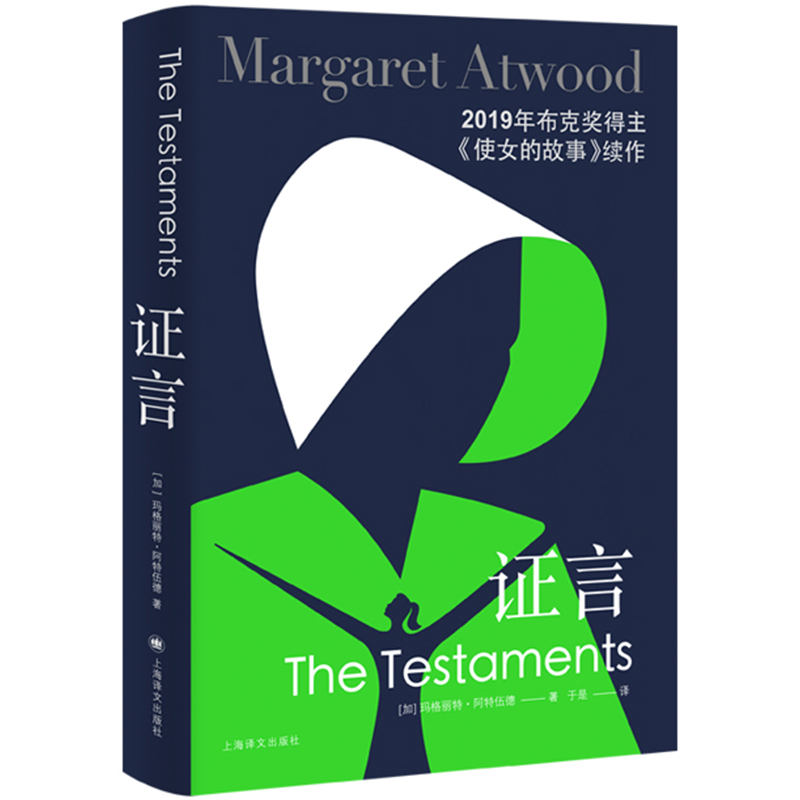 A sequel to The Handmaid's Tale, Testimony tells the story of the kingdom of Gilead showing signs of decay from within fifteen years after the conclusion of The Handmaid's Tale. At the critical moment when the great changes are approaching, the fates of three women with different backgrounds begin to intertwine, which leads to subversive consequences. They witnessed the changes of history from their own perspectives. Three different narrative voices built a larger and more open space and time, and for the first time revealed the secret behind the collapse of the country of Gilead. The past and the future are gradually overlapped in the telling, and the truth is presented to the reader in an astonishing manner.
A sequel to The Handmaid's Tale, Testimony tells the story of the kingdom of Gilead showing signs of decay from within fifteen years after the conclusion of The Handmaid's Tale. At the critical moment when the great changes are approaching, the fates of three women with different backgrounds begin to intertwine, which leads to subversive consequences. They witnessed the changes of history from their own perspectives. Three different narrative voices built a larger and more open space and time, and for the first time revealed the secret behind the collapse of the country of Gilead. The past and the future are gradually overlapped in the telling, and the truth is presented to the reader in an astonishing manner.
"Testimony" is more thrilling than "The Handmaid's Tale" as it is the story of how women rediscovered their "right to know" in a variety of ways—including ingenuity and action.
6. "The Choice to Be a Mother"
(Israel) By Ona Donat, Beijing United Publishing Company, February 2022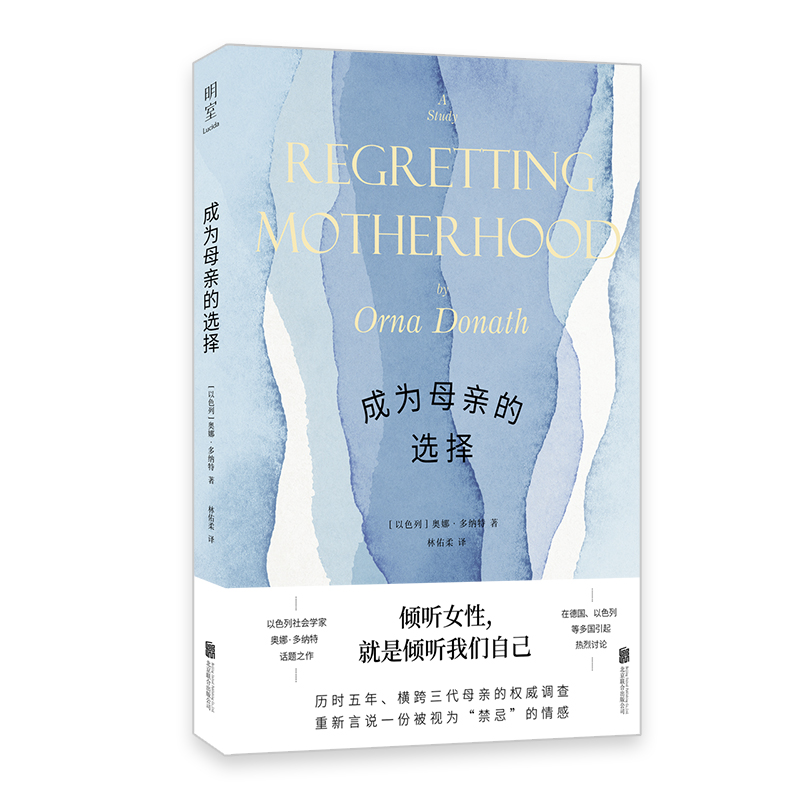 This is a topical work by Israeli sociologist Ona Donat. This book focuses on the topic of "regret childbirth" for the first time, showing the emotional process of women before and after childbirth. Regret is not non-existent, just not allowed to speak.
This is a topical work by Israeli sociologist Ona Donat. This book focuses on the topic of "regret childbirth" for the first time, showing the emotional process of women before and after childbirth. Regret is not non-existent, just not allowed to speak.
Is motherhood innate? Is it a woman's job to be a mother? These questions accompany Donat and her investigations, culminating in the book "Choices of Being a Mother." For the book, Donat interviews twenty-three Israeli women who, regardless of age, education, or social class, have one thing in common: motherhood. Through long-term follow-up interviews, Donat traced the process of these women becoming mothers, analyzed their emotional world before and after the birth of their children, and investigated how they recognize and resolve the contradictions and conflicts in the process of childbirth. "The Choice to Be a Mother" presents a three-dimensional and complex image of a mother with a woman's own voice.
7. "First Time Mother"
(English) by Ann Oakley, Nanjing University Press, published in January 2022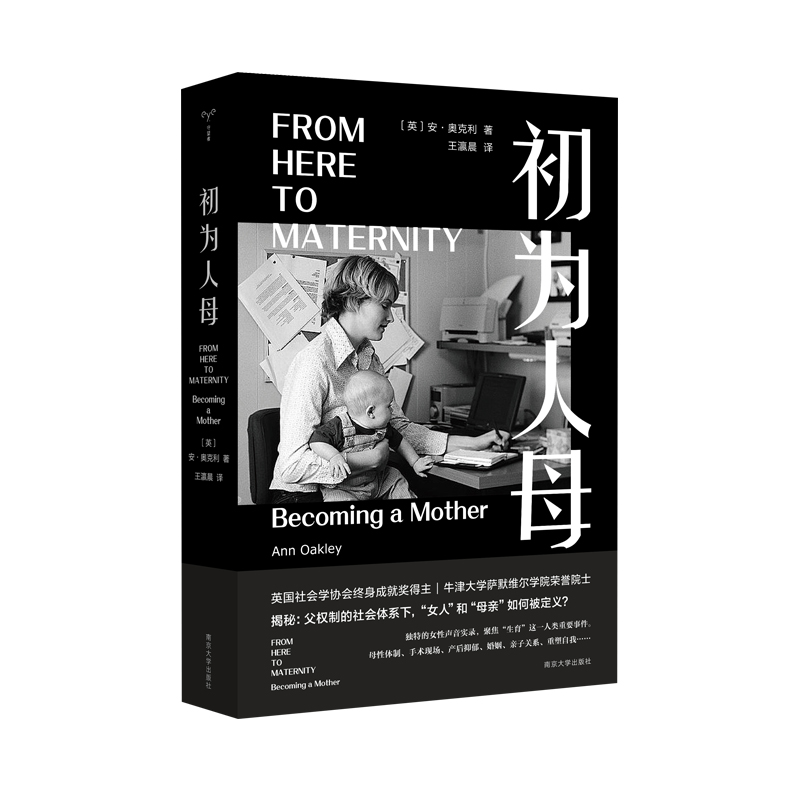 What does being a first-time mother mean to women? What does it mean to be a woman and a mother in our social culture?
What does being a first-time mother mean to women? What does it mean to be a woman and a mother in our social culture?
British sociologist Ann Oakley explores the issue of fertility with a sharp eye and question after question. She will give back to women the right to interpret "reproduction" as defined by patriarchal politics and professionals. In the 1970s, she interviewed 66 women and recorded what it was like to be a first-time mother, based on their narration. Based on the real stories of these women, Oakley explores: the mental journey of pregnancy, real childbirth experiences, postpartum depression, parenting routines, division of labor in the family, lessons learned, and more.
In her conversations with these women, she started a popularization class on fertility, traced the history of fertility, observed the birth scene closely, and talked about parent-child relationship, work, sex, family politics and other topics.
8. Patriarchy and Capitalism
(Japanese) Ueno Chizuruko, Zhejiang University Press, published in March 2020 What is patriarchy? How are contemporary women oppressed and exploited by patriarchy? Where is the road to women's liberation?
What is patriarchy? How are contemporary women oppressed and exploited by patriarchy? Where is the road to women's liberation?
This book is an important work completed by the author after ten years. It is the end of the second wave of feminism, the beginning of the rise of post-modern feminist thought and queer theory, and the impact on various factions of feminism, especially Marxist feminism. Think again. In modern society, under the dual control of the "market" dominated by "capitalism" and the "family form" dominated by "patriarchy", with unpaid female labor services as the center, the historical root of women's low status has been formed. The author deeply criticizes this. , and put forward pertinent suggestions on how to improve the social status of women.
Although this book discusses the status of Japanese women, its views are applicable to the current national conditions in China to a considerable extent. Therefore, it is a great inspiration for anyone thinking about the status of women and gender equality.
9. "Women's Poverty"
(Japan) NHK special program recording group, Shanghai Translation Publishing House, published in September 2017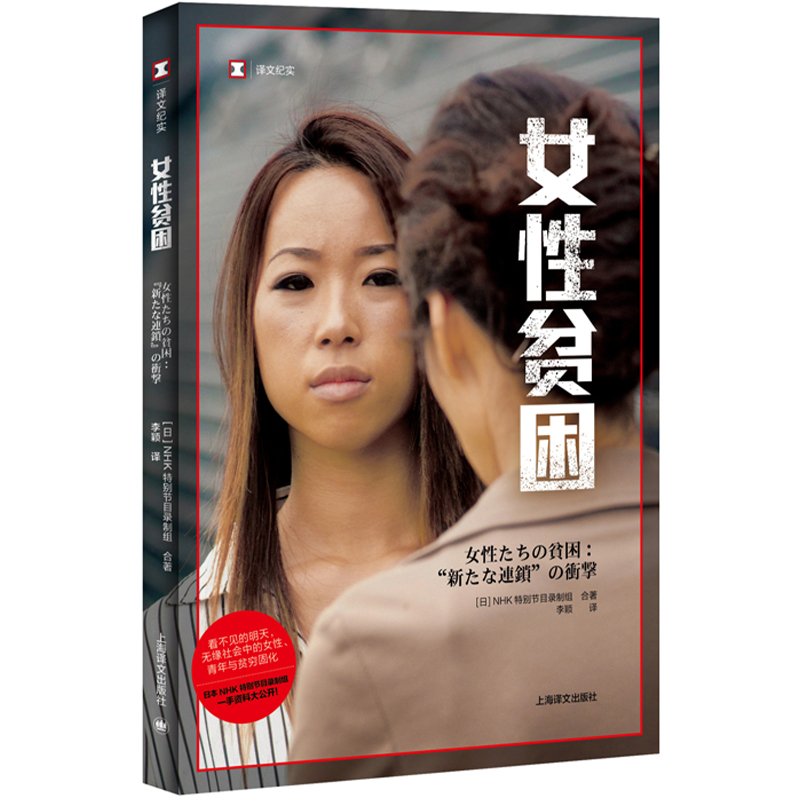 This book belongs to the translation documentary series, which is assembled by programs such as "Invisible Tomorrow - The Growing Poverty of Young Women" and "Women's Poverty - The Impact of New Chains" produced by the special reporting team of Japan's NHK TV station. It focuses on the increasingly serious social problems in Japan, such as poverty among women and children, single-parent families, and the intergenerational transmission of poverty.
This book belongs to the translation documentary series, which is assembled by programs such as "Invisible Tomorrow - The Growing Poverty of Young Women" and "Women's Poverty - The Impact of New Chains" produced by the special reporting team of Japan's NHK TV station. It focuses on the increasingly serious social problems in Japan, such as poverty among women and children, single-parent families, and the intergenerational transmission of poverty.
10. "Gender Politics and the State: On Chinese Women's Liberation"
Zhang Nian, Commercial Press, published in February 2014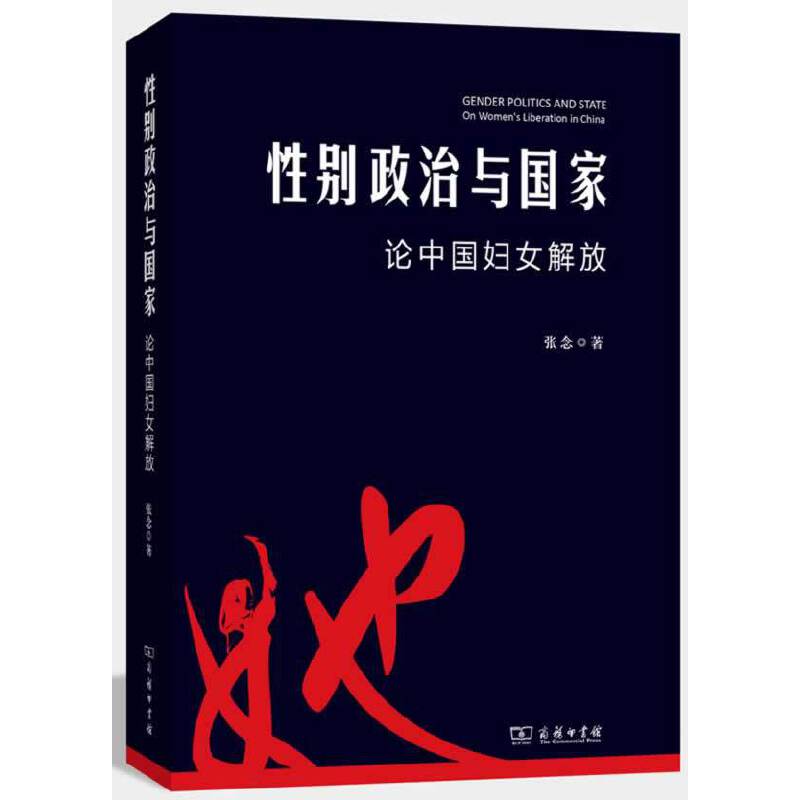 For nearly a hundred years, the individual existence of Chinese women has gone through a bumpy journey from being ignored, distorted, deformed to justified. While we have "lost a sense of belonging" in our understanding of the most important political concepts such as revolution, liberation, equality, and freedom, we must pay attention to a very important theoretical question: whether women's liberation is just a release from the cultural shackles of traditional society? It has not acquired some kind of a priori value support by itself, and has found the ultimate national reason for liberation and freedom at the political level? This philosophical lack may be precisely the deep-seated reason why Chinese women cannot go further in real life.
For nearly a hundred years, the individual existence of Chinese women has gone through a bumpy journey from being ignored, distorted, deformed to justified. While we have "lost a sense of belonging" in our understanding of the most important political concepts such as revolution, liberation, equality, and freedom, we must pay attention to a very important theoretical question: whether women's liberation is just a release from the cultural shackles of traditional society? It has not acquired some kind of a priori value support by itself, and has found the ultimate national reason for liberation and freedom at the political level? This philosophical lack may be precisely the deep-seated reason why Chinese women cannot go further in real life.
The author of this book, Zhang Nian, is a famous feminist critic and associate professor at the School of Humanities of Tongji University. His main research fields include feminist theory, political philosophy and cultural criticism. This book profoundly presents the various contradictions and paradoxes in the process of Chinese women's liberation, and expands the tortuous process of Chinese women's freedom from the theoretical perspective. It is a work that fills the current academic gap.
1. The Nine: The U.S. Supreme Court
(US) Jeffrey Toobin, Shanghai Sanlian Bookstore, published in April 2010
 This book focuses on the Rehnquist Court and the Roberts Court, objectively narrating the history of the internal conflict of views and changes in the Supreme Court on the agenda of abortion, civil rights, and church-state relations between 1980 and 2007. Columnist Jeffrey Toobin described the personalities and ideas of Justices Rehnquist, O'Connor, Roberts, Kennedy and Scalia in the form of biographies through interviews with the current justices and more than 70 clerks. and upbringing, vividly illustrate the relationship between the justices' personal preferences, political affiliations and judgment opinions. The book covers almost all the important decisions of the Supreme Court in the past 17 years, and interspersed with the development of conservative organizations such as the Federalist Association and the American Center for Law and Justice.
This book focuses on the Rehnquist Court and the Roberts Court, objectively narrating the history of the internal conflict of views and changes in the Supreme Court on the agenda of abortion, civil rights, and church-state relations between 1980 and 2007. Columnist Jeffrey Toobin described the personalities and ideas of Justices Rehnquist, O'Connor, Roberts, Kennedy and Scalia in the form of biographies through interviews with the current justices and more than 70 clerks. and upbringing, vividly illustrate the relationship between the justices' personal preferences, political affiliations and judgment opinions. The book covers almost all the important decisions of the Supreme Court in the past 17 years, and interspersed with the development of conservative organizations such as the Federalist Association and the American Center for Law and Justice.As a best-selling author, Toobin is good at grasping materials, telling stories, and telling many anecdotes through his vivid brushstrokes. People will read in this book: Why did O'Connor, who personally sent Bush Jr. into the White House, finally turned against the president? How did gay clerks change the legal culture of the Supreme Court? Why does Chief Justice Rehnquist hate Miranda v. Arizona so much but refuse to overturn it? Why did President Clinton finally abandon the idea of nominating a politician for justice? Why should right-wing conservatives resolutely boycott Albert Gonzalez and Harriet Miles, two die-hard conservatives, as justices? Why did Justice Thomas say nothing during the trial?
Tobin's detailed depiction perfectly presents the other side of the justices under the black robes: Kennedy's sullenness, Rehnquist's "fashionable", Scalia's childishness, O'Connor's whims, Thomas's Maverick, Breyer's long-sleeved dance, Sutter's hermit temperament. It is for this reason that The New York Times recommended this book as one of the ten best books of 2007.
2. "Who Will Guard Justice: An Interview with a Supreme Court Justice"
(United States) Brian Ram, Susan Swain, Mark Farkas, Peking University Press, December 2012
 The President of the United States has a high position and still needs to be replaced regularly. However, the nine justices of the Supreme Court serve for life.
The President of the United States has a high position and still needs to be replaced regularly. However, the nine justices of the Supreme Court serve for life.In a superpower with more than 300 million citizens and thousands of nuclear bombs, why is judicial justice entrusted to these nine people? In this judicial "assembly line", how is the "fair judgment" as the final product produced? How can the American people trust their judicial competence and professional ethics? With these questions in mind, C-SPAN interviewed nine current justices and three outgoing justices.
For the first time in U.S. history, all justices appeared on the scene for an interview with a TV station. These precious interview records are included in this book. In the book, the justices use vivid and popular language to explain in detail the inner workings of the most powerful and mysterious government agency in the United States. They talked freely about their judicial ideas and struggles, and they did not shy away from the inside story of the Supreme Court's decision-making, and a lot of content was made public for the first time.
Through this book, Chinese readers can learn: How does the U.S. Supreme Court view public opinion? Will the "one-sided" case of public opinion affect the judgment of the justices? How do they deal with Congress, the White House? What kind of court defense style do you like and what advice do you have for lawyers? Who has the final say in internal meetings? Who drafted the judgment? In order to enrich readers' understanding, interviews with the current Supreme Court clerk, former judge's assistant, former chief government attorney, trial lawyer, senior journalist and historian are attached at the end of the book, which comprehensively shows readers the highest level of the United States from different perspectives. The historical origin, functional orientation and traditional culture of the courts are convenient for readers to further understand these "patron saints of the rule of law and justice".
3. A Moment of Dissent: The 'Notorious' Justice Ginsburg
(United States) Irene Kamon, Shanna Kaniznick, Hunan Literature and Art Publishing House, published in September 2018
 Ruth Bader Ginsburg was nominated to justice by Democratic President Bill Clinton in 1993. She is the second female justice of the U.S. Supreme Court after Sandra Day O'Connor, and the first female Jewish justice. She devoted her life to the struggle, maintenance and protection of women's rights, and firmly advocated that women have the right to abortion.
Ruth Bader Ginsburg was nominated to justice by Democratic President Bill Clinton in 1993. She is the second female justice of the U.S. Supreme Court after Sandra Day O'Connor, and the first female Jewish justice. She devoted her life to the struggle, maintenance and protection of women's rights, and firmly advocated that women have the right to abortion.A widely adored American civil rights icon, Ginsburg is affectionately dubbed "Notorious RBG" by fans, a parody of famous American rapper Christopher Wallace.
Ginsburg passed away on September 18, 2020. Trump has since nominated Amy Coney Barrett to the Supreme Court, and she passed a vote by the U.S. Senate Judiciary Committee to be sworn in on October 26. This means that the Republican-nominated justices occupy 6 of the 9 seats, further consolidating the dominant majority and lighting the "right turn signal" for American society for decades to come. The U.S. Supreme Court recently denied that the right to abortion is a constitutional right and one of the chain reactions after Ginsburg's death.
"Hour of Dissent" is Ginsburg's graphic biography. Part of the book is a biography, part a collection of paintings, and part a record of Ginsburg's case. Through interspersed interviews, illustrations, hot words on the Internet and other materials, a wonderful retrospective of Ginsburg's life was carried out. The book was also recommended by Jeffrey Toobin, author of The Nine: The U.S. Supreme Court, and Fan He, a well-known legal and political translator. Alliance (ACLU) and other book reviews recommended.
4. The Handmaid's Tale
(Canada) by Margaret Atwood, Shanghai Translation Publishing House, December 2017
 Margaret Atwood is one of Canada's most prominent contemporary writers, her masterpiece "The Handmaid's Tale" was published in 1985. This is a dystopian future novel, which tells the story of the future in the fictional Republic of Gilead. Due to environmental pollution and ecological damage, the survival rate and fertility rate of human beings are reduced. Above all, men occupy an absolute dominant position, while women are completely reduced to men's appendages and are divided into different classes. The Handmaid is one of those ranks, and is at the heart of the discussion throughout the story.
Margaret Atwood is one of Canada's most prominent contemporary writers, her masterpiece "The Handmaid's Tale" was published in 1985. This is a dystopian future novel, which tells the story of the future in the fictional Republic of Gilead. Due to environmental pollution and ecological damage, the survival rate and fertility rate of human beings are reduced. Above all, men occupy an absolute dominant position, while women are completely reduced to men's appendages and are divided into different classes. The Handmaid is one of those ranks, and is at the heart of the discussion throughout the story.The protagonist Offfred is a maid of the Republic of Gilead. One of the few fertile women in the country, she was assigned to the families of commanders who had no offspring to help them produce offspring. Like other women in this country, she has no freedom of movement and is deprived of property, work and reading. Except for some special days, the maids were only allowed to go out shopping together once a day, and their every move was monitored by "eyes". To make matters worse, in this crazy world, human beings not only have to face ecological deterioration, economic crisis and other problems, but also fall into a chaotic situation of mutual hostility, hierarchies and wanton killings. Women are not the only victims of oppression in this catastrophe, everyone is a victim of this seemingly absurd world.
"The Handmaid's Tale" was adapted into a series of the same name in 2017 and aired on the Hulu TV network. After its broadcast, it won the 69th Emmy Awards for Best Drama, Best Actress, Best Supporting Actress, Best Supporting Actress and Best Supporting Actress. Awards such as director and best screenplay have aroused strong repercussions around the world. In the context of the abortion rights crisis in the United States, the story also takes on more real-world significance. The Handmaid's Tale, people thought, was becoming a reality.
After the U.S. Supreme Court's draft overturning Roe v. Wade leaked in early May, author Atwood has repeatedly criticized the Supreme Court's intention to further restrict women's reproductive freedom. She also weighs in on the issue in her new book, Burning Questions, which has been published in The Guardian .
5. "Testimony"
(Canada) by Margaret Atwood, Shanghai Translation Publishing House, July 2020
 A sequel to The Handmaid's Tale, Testimony tells the story of the kingdom of Gilead showing signs of decay from within fifteen years after the conclusion of The Handmaid's Tale. At the critical moment when the great changes are approaching, the fates of three women with different backgrounds begin to intertwine, which leads to subversive consequences. They witnessed the changes of history from their own perspectives. Three different narrative voices built a larger and more open space and time, and for the first time revealed the secret behind the collapse of the country of Gilead. The past and the future are gradually overlapped in the telling, and the truth is presented to the reader in an astonishing manner.
A sequel to The Handmaid's Tale, Testimony tells the story of the kingdom of Gilead showing signs of decay from within fifteen years after the conclusion of The Handmaid's Tale. At the critical moment when the great changes are approaching, the fates of three women with different backgrounds begin to intertwine, which leads to subversive consequences. They witnessed the changes of history from their own perspectives. Three different narrative voices built a larger and more open space and time, and for the first time revealed the secret behind the collapse of the country of Gilead. The past and the future are gradually overlapped in the telling, and the truth is presented to the reader in an astonishing manner."Testimony" is more thrilling than "The Handmaid's Tale" as it is the story of how women rediscovered their "right to know" in a variety of ways—including ingenuity and action.
6. "The Choice to Be a Mother"
(Israel) By Ona Donat, Beijing United Publishing Company, February 2022
 This is a topical work by Israeli sociologist Ona Donat. This book focuses on the topic of "regret childbirth" for the first time, showing the emotional process of women before and after childbirth. Regret is not non-existent, just not allowed to speak.
This is a topical work by Israeli sociologist Ona Donat. This book focuses on the topic of "regret childbirth" for the first time, showing the emotional process of women before and after childbirth. Regret is not non-existent, just not allowed to speak.Is motherhood innate? Is it a woman's job to be a mother? These questions accompany Donat and her investigations, culminating in the book "Choices of Being a Mother." For the book, Donat interviews twenty-three Israeli women who, regardless of age, education, or social class, have one thing in common: motherhood. Through long-term follow-up interviews, Donat traced the process of these women becoming mothers, analyzed their emotional world before and after the birth of their children, and investigated how they recognize and resolve the contradictions and conflicts in the process of childbirth. "The Choice to Be a Mother" presents a three-dimensional and complex image of a mother with a woman's own voice.
7. "First Time Mother"
(English) by Ann Oakley, Nanjing University Press, published in January 2022
 What does being a first-time mother mean to women? What does it mean to be a woman and a mother in our social culture?
What does being a first-time mother mean to women? What does it mean to be a woman and a mother in our social culture?British sociologist Ann Oakley explores the issue of fertility with a sharp eye and question after question. She will give back to women the right to interpret "reproduction" as defined by patriarchal politics and professionals. In the 1970s, she interviewed 66 women and recorded what it was like to be a first-time mother, based on their narration. Based on the real stories of these women, Oakley explores: the mental journey of pregnancy, real childbirth experiences, postpartum depression, parenting routines, division of labor in the family, lessons learned, and more.
In her conversations with these women, she started a popularization class on fertility, traced the history of fertility, observed the birth scene closely, and talked about parent-child relationship, work, sex, family politics and other topics.
8. Patriarchy and Capitalism
(Japanese) Ueno Chizuruko, Zhejiang University Press, published in March 2020
 What is patriarchy? How are contemporary women oppressed and exploited by patriarchy? Where is the road to women's liberation?
What is patriarchy? How are contemporary women oppressed and exploited by patriarchy? Where is the road to women's liberation?This book is an important work completed by the author after ten years. It is the end of the second wave of feminism, the beginning of the rise of post-modern feminist thought and queer theory, and the impact on various factions of feminism, especially Marxist feminism. Think again. In modern society, under the dual control of the "market" dominated by "capitalism" and the "family form" dominated by "patriarchy", with unpaid female labor services as the center, the historical root of women's low status has been formed. The author deeply criticizes this. , and put forward pertinent suggestions on how to improve the social status of women.
Although this book discusses the status of Japanese women, its views are applicable to the current national conditions in China to a considerable extent. Therefore, it is a great inspiration for anyone thinking about the status of women and gender equality.
9. "Women's Poverty"
(Japan) NHK special program recording group, Shanghai Translation Publishing House, published in September 2017
 This book belongs to the translation documentary series, which is assembled by programs such as "Invisible Tomorrow - The Growing Poverty of Young Women" and "Women's Poverty - The Impact of New Chains" produced by the special reporting team of Japan's NHK TV station. It focuses on the increasingly serious social problems in Japan, such as poverty among women and children, single-parent families, and the intergenerational transmission of poverty.
This book belongs to the translation documentary series, which is assembled by programs such as "Invisible Tomorrow - The Growing Poverty of Young Women" and "Women's Poverty - The Impact of New Chains" produced by the special reporting team of Japan's NHK TV station. It focuses on the increasingly serious social problems in Japan, such as poverty among women and children, single-parent families, and the intergenerational transmission of poverty.10. "Gender Politics and the State: On Chinese Women's Liberation"
Zhang Nian, Commercial Press, published in February 2014
 For nearly a hundred years, the individual existence of Chinese women has gone through a bumpy journey from being ignored, distorted, deformed to justified. While we have "lost a sense of belonging" in our understanding of the most important political concepts such as revolution, liberation, equality, and freedom, we must pay attention to a very important theoretical question: whether women's liberation is just a release from the cultural shackles of traditional society? It has not acquired some kind of a priori value support by itself, and has found the ultimate national reason for liberation and freedom at the political level? This philosophical lack may be precisely the deep-seated reason why Chinese women cannot go further in real life.
For nearly a hundred years, the individual existence of Chinese women has gone through a bumpy journey from being ignored, distorted, deformed to justified. While we have "lost a sense of belonging" in our understanding of the most important political concepts such as revolution, liberation, equality, and freedom, we must pay attention to a very important theoretical question: whether women's liberation is just a release from the cultural shackles of traditional society? It has not acquired some kind of a priori value support by itself, and has found the ultimate national reason for liberation and freedom at the political level? This philosophical lack may be precisely the deep-seated reason why Chinese women cannot go further in real life.The author of this book, Zhang Nian, is a famous feminist critic and associate professor at the School of Humanities of Tongji University. His main research fields include feminist theory, political philosophy and cultural criticism. This book profoundly presents the various contradictions and paradoxes in the process of Chinese women's liberation, and expands the tortuous process of Chinese women's freedom from the theoretical perspective. It is a work that fills the current academic gap.
Related Posts